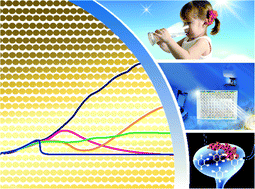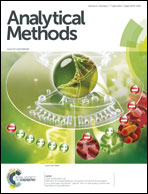A real-time cell-electronic sensing method for comparative analysis of toxicity of water contaminants†
Abstract
We report a real-time cell-electronic sensing (RT-CES) technique using the T24 bladder cancer cell line as a probe to analyze the comparative cytotoxicity of water contaminants. The RT-CES system consists of a 96-well E-plate embedded with microelectrodes in each micro-well. As T24 cells grow on the surface of the microelectrodes, the impedance between the cell-microelectrodes continuously increases with increasing cell number. When the cells are exposed to a chemical, the toxic effects on the cells resulting in cell death, detachment, and morphological changes reduce impedance. These dynamic changes are continuously monitored to provide real-time detection of cell responses. This method was successfully applied to analyze the cytotoxic characteristics of four halobenzoquinones (HBQs), emerging disinfection byproducts in drinking water, 2,6-dichloro-1,4-benzoquinone (DCBQ), 2,6-dichloro-3-methyl-1,4-benzoquinone (DCMBQ), 2,3,6-trichloro-1,4-benzoquinone (TCBQ), and 2,6-dibromobenzoquinone (DBBQ). T24 cells were seeded in each of the 96 microwells on the 96-E-plate, and treated with varying concentrations of the four HBQs. The RT-CES technique provides continuous profiles of HBQ induced cytotoxic responses and temporal IC50 histograms in T24 cells, demonstrating concentration-, time- and compound-dependent cytotoxic effects. These results enable ranking of cytotoxicity of the four HBQs: DCBQ > DBBQ > DCMBQ > TCBQ. We further examined and compared the cytotoxicity of HBQs using the conventional neutral red uptake (NRU) and 3-(4,5-dimethylthiazol-2-yl)-5-(3-carboxymethoxyphenyl)-2-(4-sulfophenyl)-2H-tetrazolium (MTS) assays, to complement the RT-CES data. The 24 h IC50 values of HBQs obtained from RT-CES correlated with those from the NRU assay (R2 = 0.9480, P < 0.05), while MTS results presented moderate and less consistent correlation with the results of the RT-CES and NRU (R2 = 0.5281 and 0.3144, respectively). All three assays show that DCBQ causes greater toxic effects on T24 than the other three HBQs, although the IC50 values are dependent on the assays. The RT-CES technique can provide sensitive and high-throughput testing of cytotoxicity of environmental contaminants.


 Please wait while we load your content...
Please wait while we load your content...